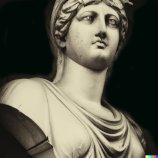Classical Decision Making Model

In the complex realm of decision-making, a myriad of models is available to scrutinize. Among the plethora of models, the classical decision making model reigns supreme. It is commonly referred to as the rational decision-making model. The core premise of this model is that individuals when faced with decision-making take the time to analyze everything. Each option is evaluated by weighing the associated costs and benefits.
The classical model is widely
recognized. Its established framework has found application in economics,
management, and psychology. Its primary goal is to provide insight into the
decision-making process of individuals. As a
normative model, it not only describes but also prescribes how people can make
the most favorable decisions.
Fundamental Assumptions
The classical model of decision making operates on the premise of several fundamental assumptions. This lays the groundwork for its implementation. The first assumption asserts that individuals understand their goals and objectives well. They harbor a profound understanding of what they wish to do. and the outcomes they desire to achieve. The second assumption presupposes that individuals have all the information concerning the decision. This implies that they are aware of all feasible alternatives and their respective outcomes. This includes the costs and benefits attached to each alternative. The third assumption is that individuals are rational and logical. They opt for the alternative that maximizes their outcomes while minimizing their costs.
Classical Decision Making Model Steps
The classical decision making model is a series of steps that individuals when making decisions. The first step in the process is the identification of the problem or decision. This may entail collecting information, conducting thorough research, or analyzing data. All this is to learn the underlying nature of the problem and its causative factors.
As the decision making process moves into its
second step, the stakes get higher, and the pressure intensifies. The decision-maker must now generate a seemingly infinite list of all possible alternatives. It's a
challenging and demanding task. It requires a blend of both conventional and
unconventional thinking styles. The decision-maker must think outside the box.
He must also consider the potential consequences of each solution with surgical
precision. It's a mind-bending and perplexing process. It requires creativity,
mental agility, and an unwavering commitment to uncovering all possibilities.
Moving on to the third step, the decision maker
must now engage in a high-wire balancing act of evaluating the pros and cons of
each alternative. They must weigh the potential outcomes, the
risks, and the trade-offs involved. with exceptional analytical skills and
acumen. It's a complex and nuanced process that demands intense focus and
attention to detail. The decision maker must
scrutinize every aspect of the decision-making process with a critical eye.
He must gather new information and conduct further analysis. This is to ensure
the most comprehensive evaluation possible. It's a delicate and challenging
task that requires mental flexibility and cognitive endurance. The ability to
navigate a labyrinth of data and information is also important.
The fourth step is the critical decision-making step. This is
where the best alternative is selected
based on the evaluation criteria. This stage
requires a comprehensive comparison of the costs and benefits of each
alternative. The ultimate aim of choosing the option that maximizes the
positive outcomes. Also to cut the negative consequences. It may be prudent to
consider the preferences of other affected individuals. This step is often rife with complexity and uncertainty and requires a
great deal of forethought and strategic planning.
The fifth step is to implement
the chosen alternative. This is a dynamic process that involves the
actualization of the decision. Constant monitoring of the outcomes ensures that
they align with the desired objectives. Revisions
or adjustments to the decision are
based on feedback or changes in the
prevailing circumstances. This stage often requires a high level of
flexibility and adaptability. Unforeseen challenges may arise during the
implementation process.
Advantages of the Classical Model of Decision Making

The classical model of decision making has several advantages over other decision making models. The main advantages is that it provides a structured approach to decision making. This can help make more informed decisions. This is because they are based on a thorough analysis of all the available information.
The classical decision making model has a reputation for promoting multiple options. and the evaluation of those options through specific criteria. This approach is beneficial as it attempts to counteract biases or preconceptions. But, it is not without its drawbacks. A disadvantage is that all the relevant information is available. Acquiring all pertinent data may be insurmountable, especially in complex or uncertain situations. The classical model presupposes that individuals are logical and rational in their decision making. Emotions, biases, or other variables may impact the decision making process. This could render the classical model less effective in such cases.
The classical model of decision making remains a widely used framework for decision making. It provides a useful starting point for making complex decisions. It can help to reduce the likelihood of making poor or irrational decisions.
Strategies for Using the Classical Model of Decision Making
There are several strategies that enhance the use of the classical model. The first strategy is to ensure that all relevant information is analyzed before making a decision. This may involve conducting research and consulting with experts or stakeholders. It may also be necessary to consider different perspectives or viewpoints.
The second strategy is to use the decision making tools and techniques to evaluate alternatives
and assess risks. Possible tools include decision trees, cost-benefit analyses,
or scenario planning. They can be used
to evaluate different options. and anticipate potential outcomes.
A third strategy is to be aware of and address any biases or
preconceptions. This requires considering the decision from different
perspectives or seeking feedback from others.
It is also important to be aware of the limitations of the classical model of decision making. They need to adapt their approach to the specific circumstances of the decision.
Conclusion
The classical model of decision making is a widely used framework. that provides a structured and systematic approach to decision making. It is based on the assumption that individuals have a clear understanding of their goals. That they have access to all the relevant information they need. Also they are rational and logical in their decision making. While the classical model has several advantages, it also has limitations. These include its assumption of perfect information and rational decision making. There must be awareness of these limitations and use strategies. With this in mind, individuals can use the classical model to make effective decisions.
